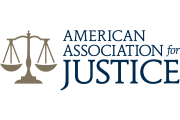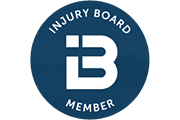Traumatic Brain Injury (TBI) is known as a silent epidemic because the problems that result from TBI are often not visible. Mild Traumatic Brain Injury (MTBI) accounts for at least 75% of all traumatic brain injuries in the U.S. However, it is clear that the consequences of MTBI can be severe and cause life-long disability and deficits.
As a San Francisco Brain Injury Attorney, I agree with the CDC’s report to the U.S. Congress on MTBI and support the recommended steps to help with this serious public health issue.
The CDC‘s MTBI Work Group, composed of experts in the field of brain injury, has determined appropriate and feasible methods for assessing the incidence and prevalence of MTBI in the U.S. and recommends how to better measure the magnitude of the problem. Their efforts were in response to Congress’ Children’s Health Act of 2000 (Public Law 106-310), whereby they were to obtain data on the incidence and prevalence of MTBI.
What is MTBI? As I also discussed in another traumatic brain injury post of mine, the conceptual definition of MTBI is an injury to the head as a result of blunt trauma or acceleration or deceleration forces that result in one or more of the following conditions:
Individuals with MTBI may suffer long-term or permanent impairments and disabilities, making it difficult to return to normal routines for weeks or months, sometimes forever. Those hospitalized are not the only people who are at risk. Many cases of MTBI are not treated at all because of under-reporting and also poorly trained clinicians who miss MTBI.
I strongly support the development of better systems to more accurately and definitively detect brain injuries–serious or mild–for all head injured people. Surveillance of MTBI patients is important not only for those who are actively being treated for brain traumas, but also for those who are uninsured, in national hospital databases, and in collegiate sports assessments, to name a few.
Why bring this to the public’s attention, or why should the MTBI Work Group need to be formed in the first place? Because in many cases the severity of these incidents is being downplayed, and lives are seriously being altered.
Historically, clinicians and investigators have classified traumatic brain injury as mild, moderate, and severe by using the scores of the Glasgow Coma Scale, a widely-used scoring system to assess coma and impaired consciousness. MTBI–also called a concussion, minor head injury, minor brain injury, minor head trauma, is one of the most common neurologic disorders. A variety of radiological and laboratory techniques have been used to diagnose TBI, including X-rays of the skull, computed tomography of the brain, MRI, and SPECT. Although these imaging and laboratory techniques help to rule out more serious TBIs, some patients with MTBI do not present imaging abnormalities, or the markers are not sensitive enough to accurately diagnose the condition. Thus, additional research is needed about using these and other more advanced techniques to accurately diagnose MTBI.
I support further research into the treatment and detection of MTBI because I believe that people with MTBI and their health care providers may fail to recognize the potential severity of a brief period of unconsciousness or memory loss caused by a blow to the head. Many individuals with MTBI do not receive adequate medical care at the time of the injury and may later present to their primary care physician days, weeks, or even months after the injury with complaints of persistent symptoms. Also, a repeated head injury can cause far more severe cognitive deficits. Early diagnosis is critical to the prevention of further injury.
We also need to further explore issues related to MTBI among children and among sports participants.
Perhaps one of the reasons MTBI is not taken as seriously as it should be is a vague definition of the condition? I am happy to learn that this study recommended an official definition to Congress. Health care providers need to be better trained to recognize the potential impact of MTBI–and not just the ER doctors or neurologists.
About the author: Claude Wyle is an aggressive advocate for San Francisco Bay Area head trauma victims. Claude has decades of experience representing those harmed by the wrongful conduct of others, and, as a San Francisco brain injury lawyer, has fought to protect the rights of head injury survivors throughout his legal career.





